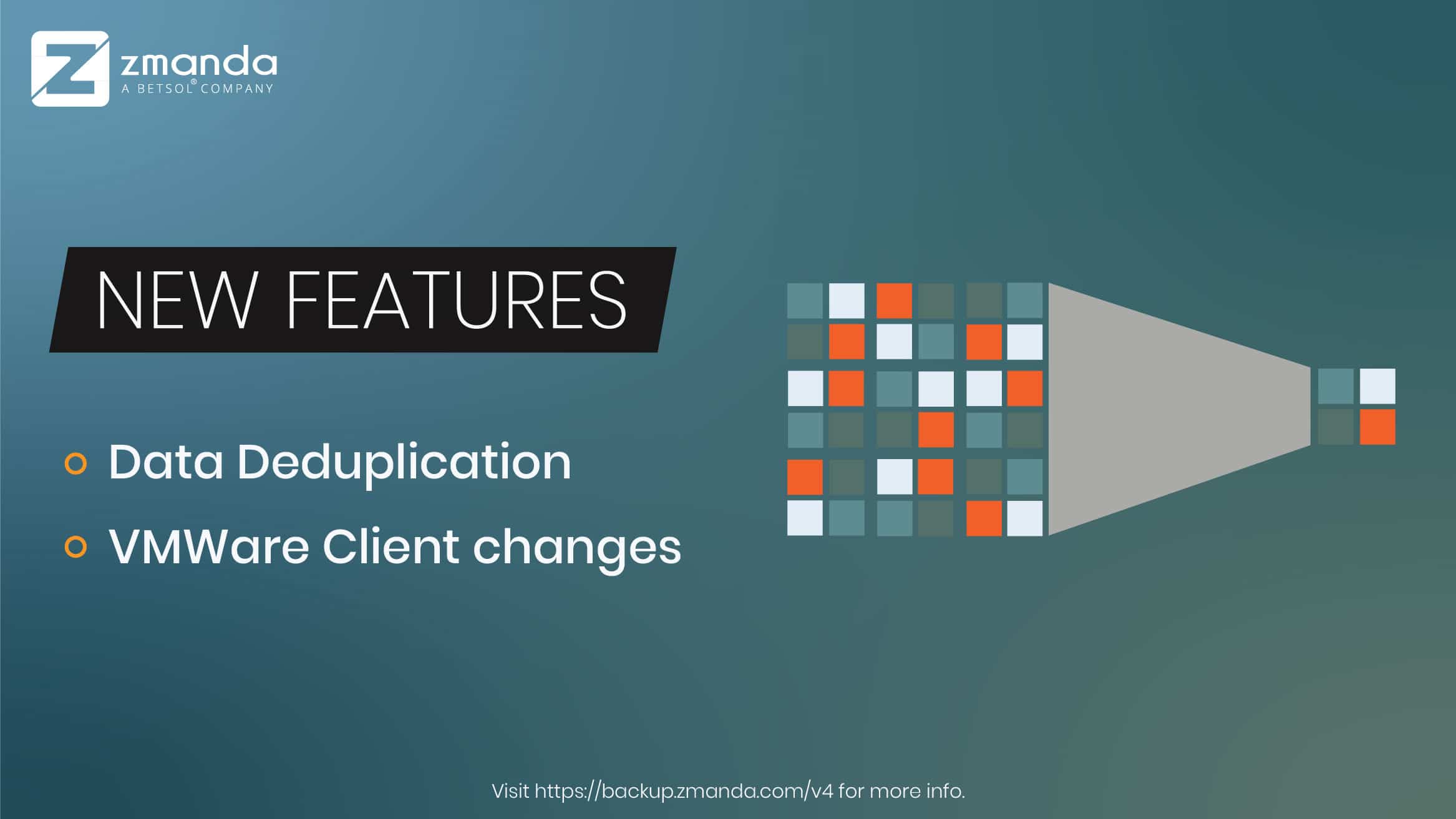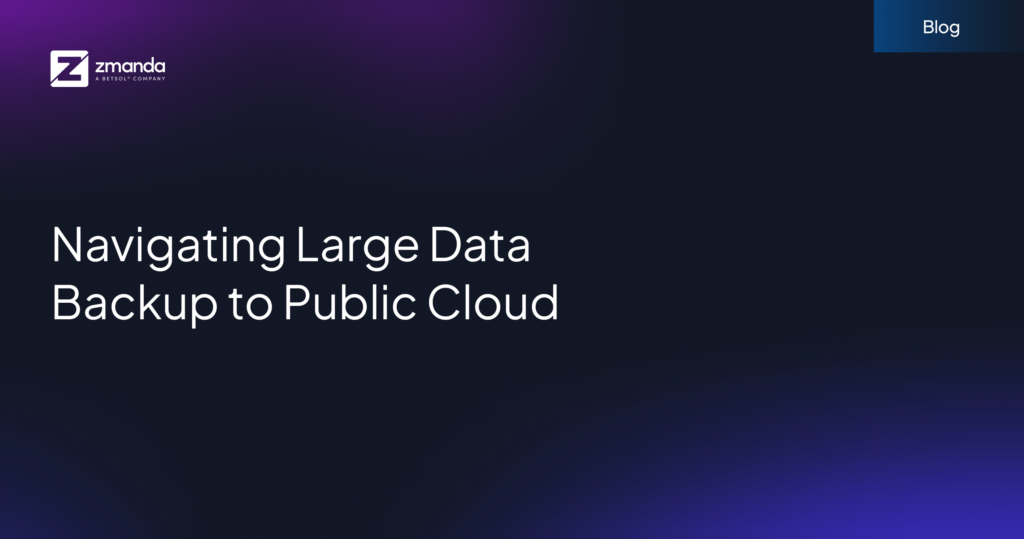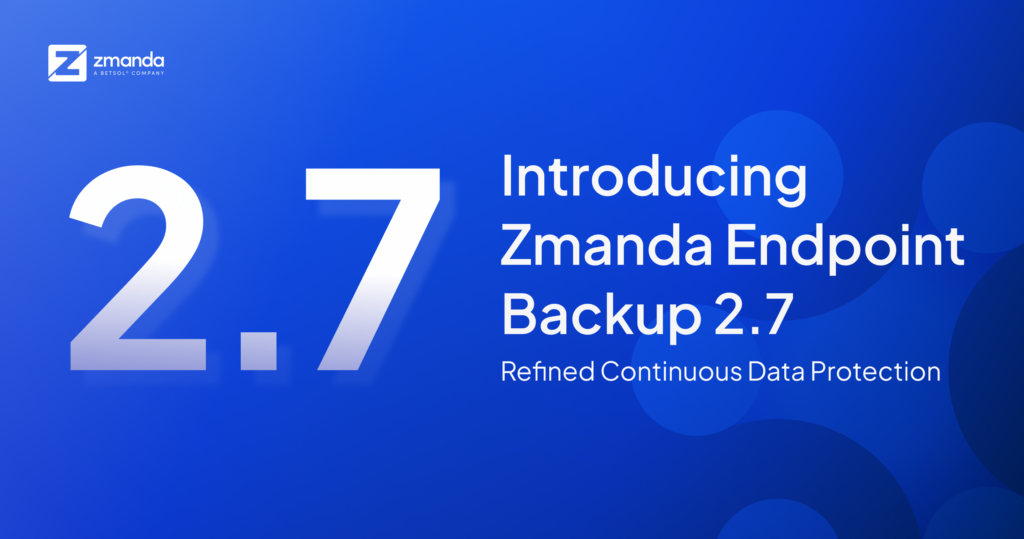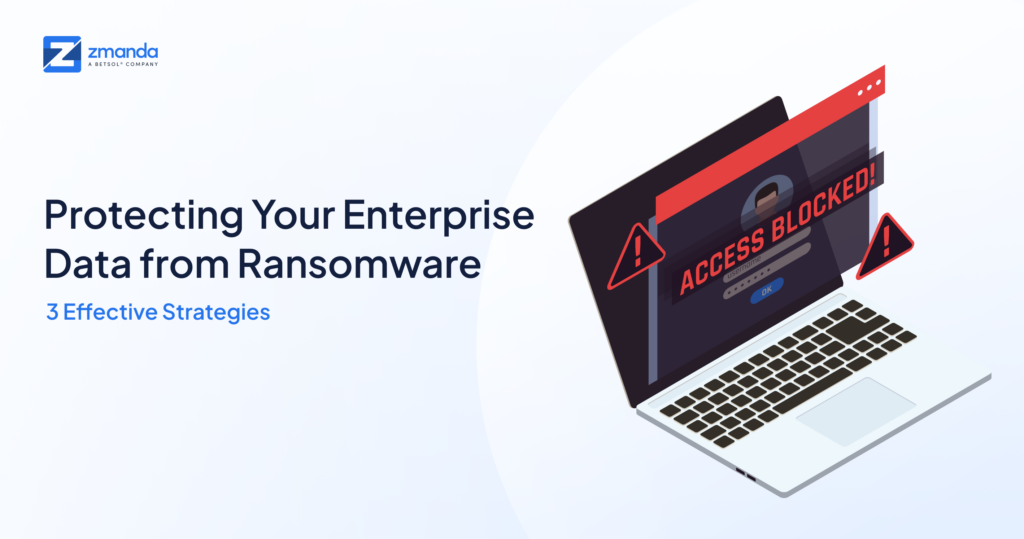
The new data deduplication and VMWare client upgrades coming to Zmanda will make it easier than ever before to backup and restore data. As the volume and complexity of your data grow, there arises the need to modernize your data backup and recovery. Thus organizations need to have a comprehensive data backup solution that maximizes their storage efficiency, performance, and data security. Zmanda is flexible, simple, and can deliver comprehensive backups of everything that runs your business. Zmanda 4.0 comes with features the following in the current release:
1. VMWare Server File Level Recovery (FLR)
The new enhanced feature of FLR allows you to recover and restore a version of a single file that was backed up using data recovery. One does not need to restore an entire virtual machine to a previous date to recover a single file, and it can be done in a breeze with FLR.
2. Data Deduplication Capabilities
Zmanda 4.0 now comes with the capability of removing duplicate files with of same content in the backup, thereby increasing the backup efficiency and reducing backup file size and hence improving storage coherence.
Let’s have a look at both the features in detail:
Zmanda Support for VMware VSphere 6.7 and Server FLR
VMware Data Recovery, a backup and restore solution, protects the entire virtual environment. These backup and restoration operations are steered using a backup appliance, which stores the virtual machines to the deduplication store. It sometimes happens users try to restore a version of a single file that was backed up, but unfortunately, the file seems deleted from the previous version. Restoring the entire previous version of a virtual machine would be cumbersome for users; here file level restore plays an important role.
FLR provides a way to access individual files within a restore point. This access helps users to read copies of files or restore them from within restore points to any other available location. In short, FLR creates two copies of a file so the versions could be compared, or it could overwrite an existing file with an older version confined in the restore point, efficiently reverting to a previous version.
VMWare VSphere 6.7 release has been updated with new features and customers intending to use them will need to upgrade their virtual environment to the latest VMware VSphere version.
Zmanda VMWare Client has been included with new libraries from VMware to support the VMware VSphere 6.7 platform. Zmanda VMWare client is capable to back up and recover the virtual machines created with VMware hardware version 14 and 15 on VMware VSphere 6.7 platform
Software that Should be Installed on Amanda Server
- Amanda Enterprise 4.0 (including dependencies) must be installed on the Amanda server. Make sure the Amanda Enterprise server and Zmanda Management Console are functional before installing and configuring VMware ESX application. Amanda VMware ESX application agent performs the backup from the Amanda server. No additional Amanda client software is required. No software is required on the ESX server.
- Upgrade of VMware VSphere libraries leads to the upgrade of Python and Curl in Amanda Server as per the requirement of VMware VSphere 6.7.
This new feature can perform VMware Server FLR in Zmanda. Zmanda VMWare client is now capable of recovering file/files from the Zmanda VMWare Client backup.
What are the Benefits?
- No indexing at Backup time, saving loads of time.
- File-level recovery from legacy backup.
- File restore to Amanda server’s temporary location.
- File restore to the user-specified location (can be the location of other machines).
- File transfer through the secure ssh connection.
- No Need to create Virtual Machine on ESXi/vCenter.
- No need to connect ESXi/vCenter for file restore.
Data Deduplication Capabilities
Backup operations become far more complex with redundant files being backed up. The backup source could include multiple copies of either:
- Operating system files
- Local tool/ Infrastructure files
- File archives / VM-storage of many types.
To exclude all possible duplicate files by its file location or by the filename can become redundant as the level of detail starts to ignore vast areas of possibly unique changes or file modifications.
To simplify any backup and restore strategy, it will be much simpler to simply minimize this through automation. This can lower the cost of every added duplicate file to nearly zero, barring only the barriers that exist.
Zmanda uses the existing holding disk hardware space on the Amanda server to perform the deduplication using zbackup utility, hence data deduplication capabilities in Zmanda need to configure holding disk as per Zmanda guidelines.
What are the Benefits?
- Parallel LZMA or LZO compression of the stored data.
- Built-in AES encryption of the stored data.
- Use of a 64-bit rolling hash, keeping the number of soft collisions to zero.
- The repository consists of immutable files. No existing files are ever modified.
- Written in C++ only with only modest library dependencies.
- Safe to use in production.
- Possibility to exchange data between repos without recompression.
What Comes Next for 4.0?
Subscribe and get real-time updates on new features and offers sent directly to your email. New release updates sent directly to your email. Also, visit backup.zmanda.com/v4 to learn more about the new features that are coming with 4.0.
Be sure to also check out Rutgers Case Study: How the University Saved Tens of Thousands of Dollars


